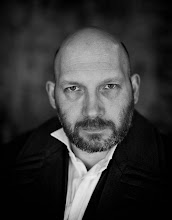 Some writers work quickly, some work slowly. On occasion, I do both.
Some writers work quickly, some work slowly. On occasion, I do both.Very often, the first 1,000 - 1,500 words of a story come rapidly to me, a flow of images and situations – what I like to refer to as the ‘launch pad’ scenes – but the inevitable moment arrives when that initial outpouring stops. Sometimes it slows to a trickle, at other times it halts dead in its tracks. Which is when I reach the ‘what the hell happens now?’ moment and have to start thinking about back story and the ‘six serving men’ that Kipling spoke of : "I keep six honest serving-men/ (They taught me all I knew);/ Their names are What and Why and When And How and Where and Who." )
Depending on the story in question and how deeply I have thought about its structure, character motivations and conclusions the next stage of writing can also come either rapidly or slowly (slowly more often, to be honest) until I reach the moment when I can safely write the words The End.
It’s rare, however, that those words actually mark the end of the writing process. In reality, they simply mark the moment when I have to go back, take the story apart and begin to rebuild it. There is a wonderful nugget of advice in Stephen King’s book On Writing (actually, there are many wonderful nuggets of advice in that particular book) given to him by Algis Budrys (I think) that ‘second draft equals first draft minus 10%’. It’s a good rule, akin to ‘murder your darlings’, and one that gets a writer thinking about what is absolutely necessary in the story.
Of course, it’s up to the individual writer to determine exactly what is necessary and what isn’t. With me, imagery and mood are just as important as the movement of plot – particularly since, as Robert Heinlein once noted, there are only a strictly limited number of plots in the world anyway (somewhere between 3 and 36 depending upon who you listen to). But even within those parameters, the right images are important, the right mood is paramount, or to put it another way, it’s about finding the right words for the story.
The business of drafting a story is, for me, a continuous process, and can sometimes run to as many as six or seven drafts depending on the story and what I am trying to achieve with it. With short fiction every word is precious and every word needs to fulfill its function, whether is sets a scene, a mood, describes a character or his/her actions, or simply gets the character(s) from point A to point B in the narrative.
Of course, there are as many different ways to write a story as there are writers to do it and no method is necessarily better than another, but I think that the real importance of redrafting is getting the writer to think about the story and the words that he has placed upon the page. Even if you are eager to move on to the next story and to tell your next tale (always a good thing, I feel, since if you aren’t excited by your work then how an you expect anyone else to be) it’s always worth it to take time over your work and make sure that everything fits together the way it should and the way you want it to.


No comments:
Post a Comment